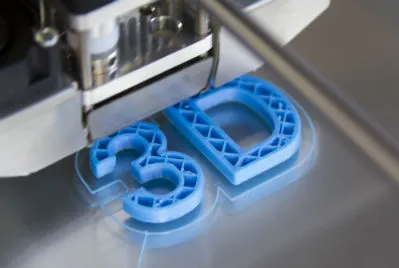Before, many manufacturers were designing with the help of CNC machining etc. Nowadays, many manufacturers are already doing it through 3D printing. 3D printing is one of the best manufacturing processes today, and why is it so, because it has some advantages that traditional manufacturing cannot give.
- Freedom of design
Thanks to the layered construction method and the simple removal of supports, it is possible to create very complex shapes that cannot be produced by traditional methods. In fact, sometimes the support structure is not even needed, depending entirely on the complexity of the product being created. However, in general, you do have a lot of freedom when designing the parts that will be produced with the help of a 3D printer.
- Low start-up costs
This is because 3D printing has little or no start-up costs. In other words, you don't have to produce large batches at a time. This is why 3D printing is often used to produce prototypes. Especially when you compare additive manufacturing to other production techniques like injection molding, you'll see why 3D printing is a great process.
- Reduce the cost of 3D printing
In some cases, customers will end up choosing traditional techniques such as injection molding. This can also be a very logical decision. But even then, 3D printing can be very interesting in the start-up process. In the early stages, modifications and fit checks can be made, thus reducing the potential cost of failure. You can do this by creating prototypes before you actually start producing large quantities of parts. Of course, test the prototype to see how you can improve the product.
- Inventory reduction and digital inventory
Thanks to 3D printing, a rapid production method, large inventories are no longer needed. As a result, inventory can be reduced or even taken over completely by digital inventory. This has several advantages. For example, you no longer need a warehouse, or it can at least be much smaller than before you started using 3D printing. Again, this will result in lower costs, so you can save more money.
- Custom 3D printed parts
Since you use digital files when producing parts using 3D printing, it is easy to make changes. So, for example, it doesn't matter if the same series or collection has specific adjustments at the model level, think about names, numbers, colors, technical adjustments, etc. Thus, you can customize your products and at the same time you can personalize them. Nowadays, customers really appreciate it when they can personalize their products.
In recent years, there has been a significant increase in the use of 3D printing in manufacturing. It’s not only fascinating but an incredible innovation that has revolutionized the manufacturing process. 3D printing is a process that creates a three-dimensional object from a digital file. The 3D printing process involves additive manufacturing techniques, which means that the material is added layer by layer until the desired object is achieved.
Why is 3D printing important in manufacturing?
3D printing is important in manufacturing because it offers a wide range of benefits and advantages that traditional manufacturing processes don’t offer. First, 3D printing provides a faster and more efficient production process. It eliminates the need for lengthy and complex traditional manufacturing processes that require multiple steps, making it possible to produce parts in a matter of hours.
Second, 3D printing offers unmatched accuracy and precision in creating prototypes and manufacturing parts. It’s a great tool for testing product ideas before mass production, which can save time and money. Third, 3D printing also allows for customization. It’s possible to tailor the design of each part to fit specific needs, which is essential in many industries such as medical and aerospace where every component is unique.
Why is 3D printing better than manufacturing?
3D printing is better than traditional manufacturing processes in several ways. First, 3D printing is a more environmentally friendly manufacturing process. Since it’s additive, there’s less waste generated. Traditional manufacturing processes, on the other hand, are subtractive, where material is removed or carved away, leaving behind unused material.
Second, 3D printing is more cost-effective when it comes to producing smaller quantities of parts. Traditional manufacturing techniques require long and complex setups that make it more expensive to produce small quantities. 3D printing eliminates the need for tooling and molds, which makes it more affordable to produce small quantities.
Third, 3D printing is faster when it comes to producing complex parts. Traditional manufacturing processes may require multiple steps, which can be time-consuming and inefficient. 3D printing enables the production of intricate products in one step, making it an ideal choice for rapid prototyping and production.
Why is 3D printing the future of manufacturing?
3D printing is the future of manufacturing because it offers many benefits, including cost savings, customization, and flexibility. With the use of 3D printing, manufacturers can create complex parts that are not possible with traditional manufacturing processes. It’s the future of manufacturing because it can create products that are more sustainable, eco-friendly, and optimized for the specific needs of each customer.
In conclusion, 3D printing is one of the best manufacturing processes available today. It disrupts traditional manufacturing by offering faster production times, cost savings, customization, and precision. It’s an environmentally friendly process that is becoming increasingly popular in manufacturing. With the continued growth of 3D printing, the future of manufacturing looks to be a highly-efficient and sustainable process, paving the way for exciting developments in multiple industries.




